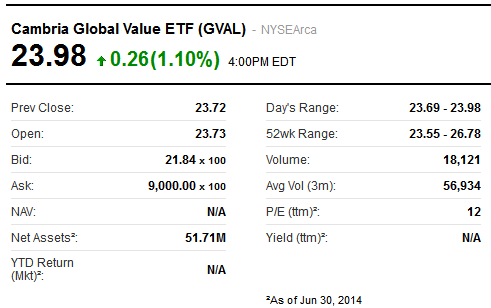...
But, I do have a question.... does this method 'work'

...
The reason that I ask is that if it really had good potential it would be used a lot more... there are a lot of smart people out there with money and they would be doing something like this if it really did work...
But if it only works in the long term, not the short, I think most big/smart money managers wouldn't be very interested. They need short term results.
Though I'd think it would be of interest to anyone responsible for pension funds - but again, their 'boss' will be looking for short term results to evaluate them, most likely. If this does work long term, could it actually be a niche for us DIY types? A method that won't get arbitraged away by the big/smart money?
Right, thanks. I knew I had seen something very similar recently: PE 10/CAPE having poor correlation to short-term equity price moves. In the cited article, Kitces links to a 2008 article about using CAPE for determining the initial withdrawal rate for a retiree.
Interesting. The way I 'read' FIRECalc, the safest WR will be determined by the worst case periods, and very likely those are the periods of high market valuations. Using that conservative WR during periods of low valuations leaves you with a large pot at the end.
So historically, you might use something like this to determine that it has been safe to use a higher WR. But a historical report like FIRECalc has already set the low end for WR.
Another twist on that is an approach that someone at bogleheads was promoting, which also made sense to me (though I found his explanation rather convoluted). Take the historically safe WR for the number of years you plan for (say 3.5% for example), and go ahead and re-set your withdraw
amount higher whenever your portfolio increases. So if you start with $1M and a $35K withdraw, and the portfolio 5 years later is at $1.3M, you can now start taking $45.5K, and adjusting that for inflation going forward.
If you think about it, that makes perfect sense - it is what a new retiree would do in that year. It answers that old paradox about why the 'old' retiree has to stick to his initial plan, while the 'new' retiree gets to take more after a market rise. The truth is, the 'old' retiree
can increase his withdraw (because he retired in a low market valuation period). The numbers back it up.
So that is, in a way, an 'adaptive' method of applying a 'market valuation' approach. Think about it.
-ERD50

